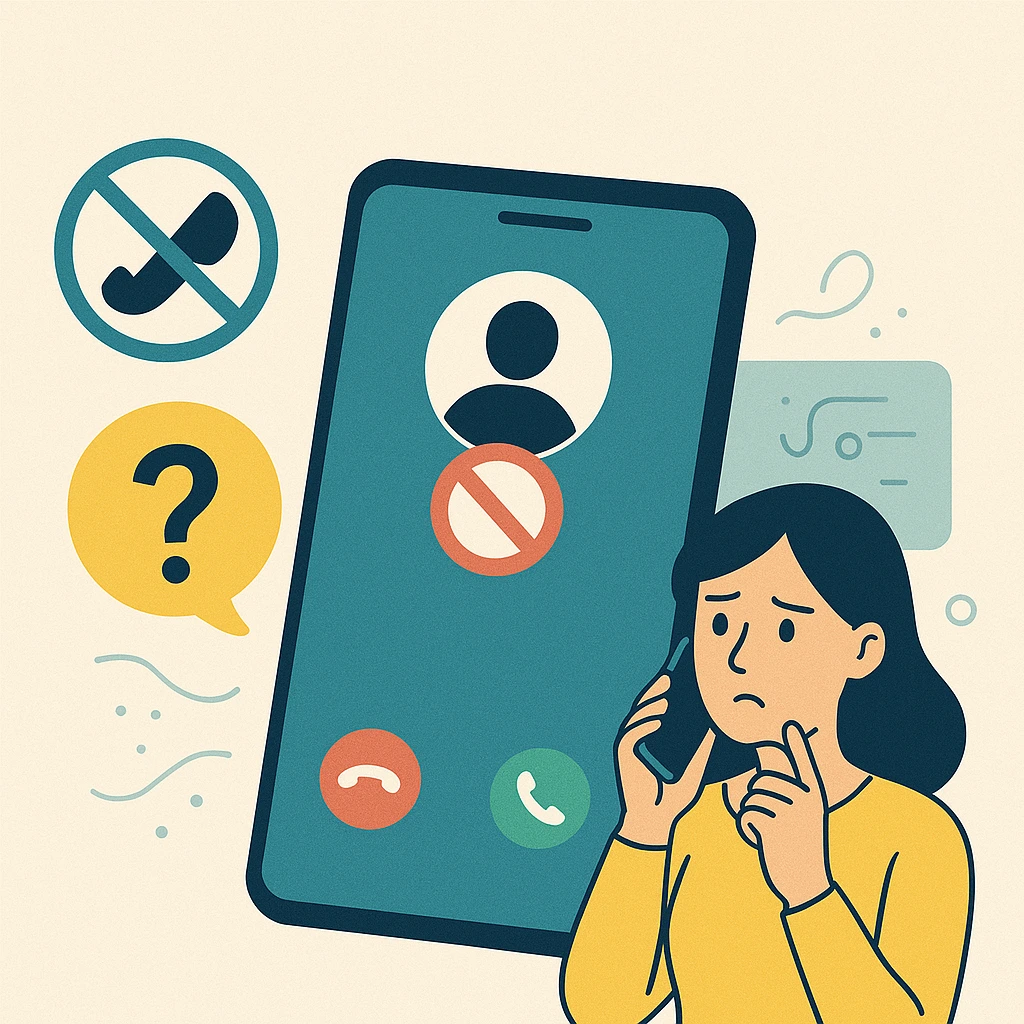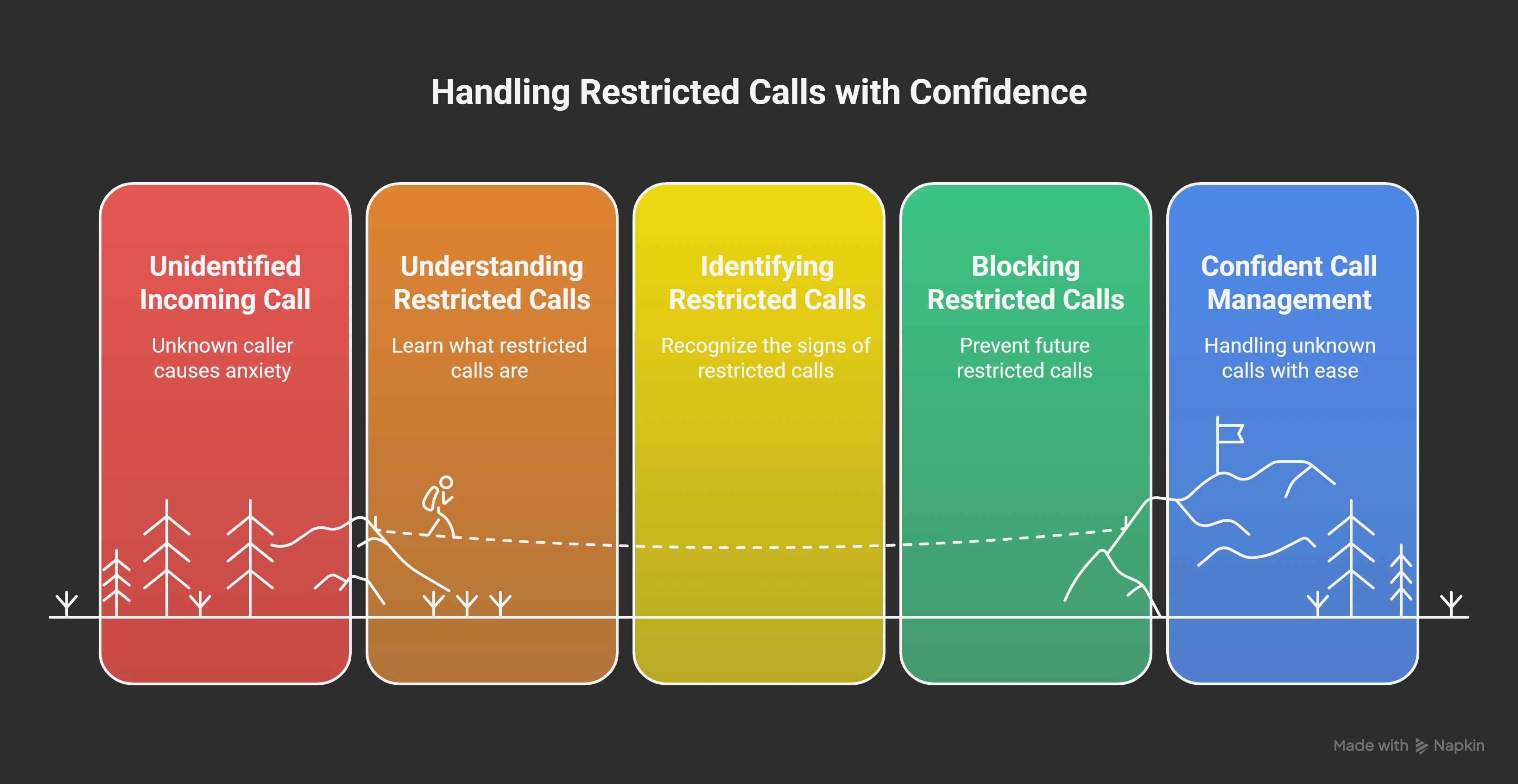
The Ultimate Guide to Restricted Calls for Everyday Users
Summary:
Restricted calls often show up as “private number” or “no caller ID,” leaving you unsure of who’s trying to reach you. In this guide, we explain what restricted calls mean, why people use them, and how to tell the difference between harmless and suspicious calls.
You’ll also learn practical ways to block restricted calls, spot potential scams, and decide when it’s worth answering. For teams looking to streamline communication, don’t miss the chance to book a free demo with PowerDialer.ai.

Restricted calls are something that nearly every cell phone user has encountered. You answer your phone, and instead of seeing a name or number associated with the call, it just states "restricted call." For many individuals, this brings on confusion and sometimes even anxiety. What is this, anyway? Should you answer it or not?
This article is your complete guide to restricted calls, written in simple, clear language for everyday users. We will cover what restricted calls are, why they happen, how to identify them, and how to block them. Along the way, we’ll also look at the risks and benefits of answering these calls, plus the role restricted numbers play in business communication.
If you want to know what a restricted call is and how to handle it with confidence, this article will provide you with real-life answers.
What Is a Restricted Call?

A restricted call is a call in which the caller voluntarily obscures their number. Rather than displaying the caller ID or phone number, your display may indicate "restricted," "private number," or "caller ID blocked."
This is when the caller uses a blocked call option on their phone or through their provider. It's one method of blocking one's number from being revealed, usually for privacy or security purposes.
Restricted calls are not anonymous calls because they have actually been blocked by the caller, and not just because the number isn't in your directory of contacts.
How Restricted Calls Differ from Unknown or Private Numbers
Restricted calls are often mistaken for unknown or private numbers, but they're not restricted calls are often mistaken for unknown or private numbers, but they're not the same. Knowing this difference assists you in choosing how to handle when you notice one of these descriptions on your phone.
Why Do People Use Restricted Calls?
Common Reasons for Blocking Caller ID
There are many reasons people and companies use restricted calls:
Privacy Protection: People may not like their personal number revealed.
Work-Life Balance: Professionals will sometimes block their number when calling after work hours.
Business Security: Banks, insurance firms, and agencies have a tendency to block numbers to keep customer info secure.
Confidentiality: Government agencies and law enforcement often employ restricted numbers.
Legitimate vs. Suspect Uses of Restricted Calls
All restricted calls are not legitimate. Scammers, spam callers, and telemarketers will frequently employ them as a means of evading detection.
Examples include:
- A telemarketer will block their number in order to circumvent your call-blocking program.
- Scammers utilize restricted calls to impersonate banks or government institutions.
- Robocalls come across as "no caller ID" to manipulate you into picking up.
- Distinguishing between authentic and suspicious restricted calls is crucial for phone privacy.
How to Identify Restricted Calls
Restricted calls can be difficult to discern since they do not reveal the caller's identity. You do not immediately see the number or the name in your contacts like you would with a regular call. Restricted calls conceal that information from you. Yet, there are some ways to identify them and determine if they could be safe or suspicious.
What Shows Up on Caller ID?
When your phone answers a restricted call, the caller ID will not show an ordinary number. Instead, you might have one of the following:
- "Restricted": A direct sign the caller consciously blocked their ID.
- "Private Number": Another label frequently used by carriers to refer to restricted calls.
- "Caller ID Blocked": Indicates the caller employed a setting or code to block their number.
- "No Caller ID": Frequently shown when the network is suppressing or cannot send the number.
In all of these instances, the individual calling has specifically decided to conceal their information. That is, you won't be able to call them back on their own.
Example: If you're called by your doctor's office on a restricted line, you won't see their number and can't press "call back." Instead, you'll have to call the main office number.
Why Identifying Restricted Calls Matters
Having the ability to quickly identify restricted calls saves you from making dumb choices:
Safety: You can dodge scammers impersonating government or bank representatives.
Time Management: If you know it is probably spam, you won't waste time answering.
Peace of Mind: Identifying patterns allows you to effectively block unwanted numbers.
Red Flags of Spam or Scam Calls
Not all restricted calls are nefarious, but most scams begin here. These are the most prevalent red flags:
1. High Volume of Calls
When you are receiving several restricted calls within the same day or week, chances are that it's not by chance. Spammers tend to use repetition to intimidate you into picking up.
2. Robotic or Pre-Recorded Voice
Robocalls by automated messages usually bear the restricted caller IDs. These tend to begin with messages such as "This is an urgent message…" or "You've won a prize…"
3. Urgent or Threat Messages
Scammers live on causing panic. They can say you owe taxes, there is pending litigation against you, or your bank account is in jeopardy.
Government agencies or banks will never make such threats on limited calls.
4. Too-Good-to-Be-True Offers
If the caller offers instant loans, free vacations, or winnings, be aware, especially if they ask for upfront payments or personal information.
5. Requests for Sensitive Information
A giant red flag is when restricted callers request:
- Bank account numbers
- Credit card numbers
- Social Security number (or its equivalent IDs)
- Passwords or PINs
6. No Voicemail or Generic Messages
Responsible callers (such as a doctor's office or delivery company) typically leave a voicemail with details. Scammers tend to hang up without leaving information. If you encounter these, it's probably a spam call and can be avoided.
How to Block Restricted Calls
Built-In Phone Settings (iOS and Android)
Today's smart phones provide simple ways to silence or block restricted numbers.
iPhone:
Settings > Phone > Silence Unknown Callers. Calls from blocked or unknown numbers will automatically go to voicemail.
Android:
Phone App > Settings > Blocked Numbers > Block Unknown/Private Numbers. This prevents blocked calls from ringing your phone.
Utilizing Carrier-Level Blocking Services
Your cellular carrier can also assist in blocking restricted calls. Some examples include:
- AT&T Call Protect: Blocks spam and scam calls.
- Verizon Call Filter: Blocks spam and lets you block unlisted numbers.
- T-Mobile Scam Shield: Blocks scam calls before they ring your phone.
Third-Party Call Blocking Apps
Truecaller, Hiya, and Robokiller apps are great for recognizing and blocking blocked numbers. They have big databases of spammers and mark suspicious callers in real time.
Advantages and Disadvantages of Permitting Restricted Calls
Why You May Want to Pick Up:
Not all restricted calls are negative. Some are truly valuable:
- Physicians or hospitals offering confidential updates.
- Employers calling without using their personal number.
- Banks verifying sensitive transactions.
By blocking all restricted calls, you may miss something important.
Dangers of Answering a Restricted Call
In turn, answering every restricted call puts you at risk for:
- Scam attempts asking for money information.
- Unwanted telemarketing solicitations.
- Increased risk of spam call lists if you confirm your number is active.
Restricted Calls in Business Settings
Why Companies Sometimes Mask Numbers
Businesses may mask their numbers for various reasons:
- To protect employees’ personal phone numbers.
- To centralize outbound communication under one “main line.”
- To keep client data secure.
Customer Concerns About Restricted Numbers
From the customer's point of view, blocked calls tend to give an impression of suspiciousness. The majority of people now like to see caller IDs. If companies want to gain trust, they should utilize professional dialer software that shows the company number.
This is where tools like PowerDialer.ai come in handy. They enable sales teams to dial at scale with CRM integration and transparent caller IDs, steering clear of the issues of trust with blocked numbers.
Schedule a free demo of PowerDialer.ai today and learn how it assists you in connecting more effectively.
Practical Advice for Handling Restricted Calls
The following are some everyday tips to handle restricted calls:
Respond carefully: If you're waiting for an important call, respond but do not reveal confidential information.
Utilize voicemail: Send restricted calls to voicemail. If it's urgent, the caller will leave a message.
Enable call blocking applications: These applications assist in blocking scam and spam calls.
Educate relatives: Older people and children should be alerted regarding restricted calls and potential scams.
The Psychology Behind Restricted Calls
Why do restricted calls feel so uncomfortable? It’s because people like transparency. When the caller ID is blocked, it creates uncertainty. Research shows that people are less likely to answer when they don’t know who is calling, which is why businesses are moving toward caller ID verification instead of masking numbers.
Future of Restricted Calls
The tide is turning. Carriers, apps, and regulators are collaborating to screen out spam and scam calls. Technology such as STIR/SHAKEN protocols is being implemented to authenticate caller IDs. This results in fewer blocked calls making it through in the future.
For companies, this makes professional platforms like PowerDialer.ai even more crucial to keep things transparent and build customer trust.
Final Thoughts
Restricted calls are a feature of contemporary telephone communication. They can sometimes be harmless, sometimes crucial, and sometimes spam. The trick is understanding how to manage them.
- Make use of the restricted call features on your phone.
- Put call blocking software into place in order to minimize spam.
- Be careful not to share personal information.
For companies, steer clear of restricted calls, openness creates trust.
If you have sales or support teams running, the wiser thing to do is to employ a clear, AI-based dialer. That's where PowerDialer.ai comes to your rescue. It provides your team with automation, CRM integration, and trustworthy caller IDs.
Schedule a free demo with PowerDialer.ai today and learn how you can enhance your outreach without compromising on your calls being trusted and effective.
FAQs
Can I trace a restricted call?
Usually, no. Restricted calls are meant to conceal the caller. But law enforcement and carriers can trace them if bound by law.
Are restricted calls illegal?
No. Blocking caller ID through restricted settings is legal. But employing it in fraud or scams is illegal.
What's the difference between "restricted" and "no caller ID"?
Restricted implies the caller voluntarily suppressed their number. No caller ID typically indicates the system couldn't show it.
